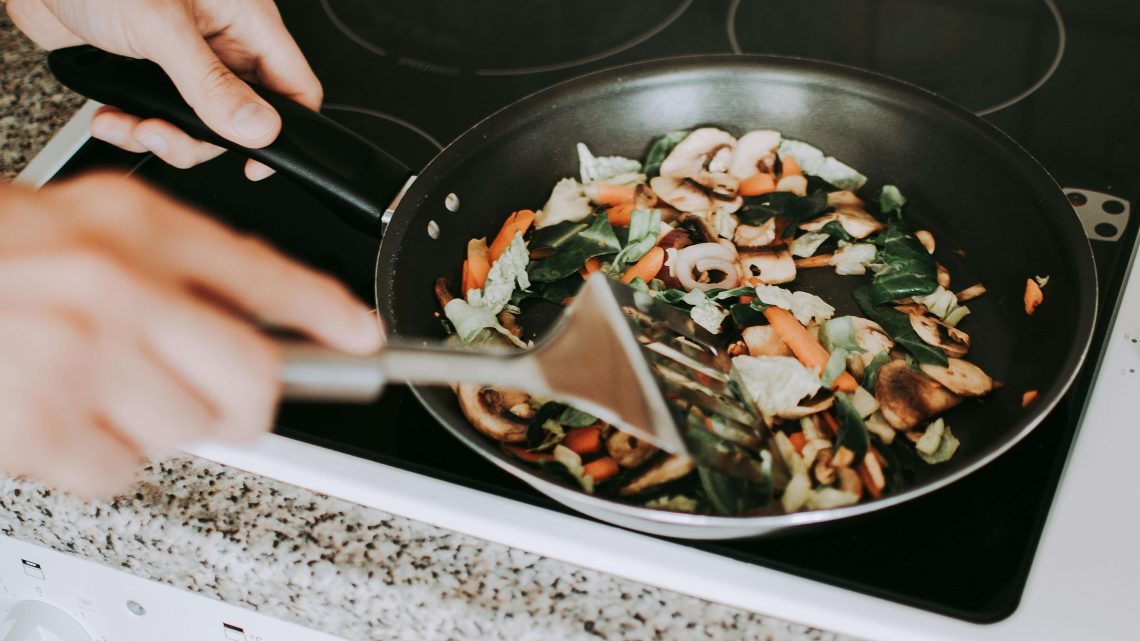Non-stick pans make cooking and cleanup easy, but what goes into this cookware? Are non-stick pans safe? Questions like this have raised concerns about kitchen safety and potential health concerns. It is important to know what to look for and how they can harm you.
What Makes a Non-Stick Pan Hazardous?
PTFE is a chemical that is used to coat non-stick cookware, commonly known as Teflon. It was originally developed for industrial purposes and later became popular because it prevented food from getting stuck to surfaces. However, the National Library of Medicine explained that even at normal cooking temperatures the coating can lead to toxic gases and chemicals to be released.
Another major concern is the use of PFOA (perfluorooctanoic acid), a toxic pollutant that was used in the manufacturing of PTFE. According to Chemtrust, PFAS are a large group of man-made substances called “forever chemicals” meaning that they take thousands of years to break down. Their use in non-stick cookware and other products can lead to serious health concerns such as certain cancers, hormonal disruption, and damage to vital organs. This has been phased out of production due to health concerns, but alternatives could pose similar health risks.
How to Tell If Your Cookware Is Safe
Non-stick pans can be safe to use, but with certain conditions. According to the San Francisco Environment Department if you are using a non-stick pans to limit PFAS exposure on non-stick pans do not cook on high heat, cook in a ventilated area and use wooden cooking utensils to prevent scratching.
It’s difficult to figure out which non-stick cookware is truly safe for your family, largely because many companies aren’t transparent. You’ll often see “PFOA-free,” but that doesn’t mean it’s free of all harmful chemicals. To make the best choice try to buy from brands that clearly disclose their materials. Specifically, look for labels that state “PFAS-free” and “PFOA-free”.
It’s important to know if a pan has “gone bad” and would expose you to harmful chemicals. If a pan shows any sign of physical damages like scratches, flaky coating, warped, sticking, or dark discolorations that is generally a sign that the pan is not safe to use.
Safer Alternatives to Non-Stick Cookware
Picking out a different type of pan can be daunting, but here is a handle table with different materials and their benefits:
| Material | Key Features |
| Ceramic-coated | Non-stick surface, even heat distribution, easy cleanup |
| Stainless Steel | Even heat distribution, durable |
| Cast Iron | Great heat retention, good heat distribution |
| Carbon Steel | High heat tolerance, excellent heat distribution, non-stick properties |
Can You Sue for PFAS Exposure?
Accumulating PFAS could lead to serious health issues. If you’ve been affected, especially by products you’ve used for a long time, and have a related health issue, you might be able to take legal action. It’s wise to talk to a lawyer who knows about these types of cases to see if you have a claim.
Stay Informed, Stay Safe
It’s important to be aware of the ongoing concern about PFAS, especially in older or lower-quality non-stick cookware. These “forever chemicals” pose significant health risks due to their inability to degrade. To protect your health and avoid kitchen hazards, it’s crucial to be an informed consumer and consider transitioning to safer alternatives.





No Comment